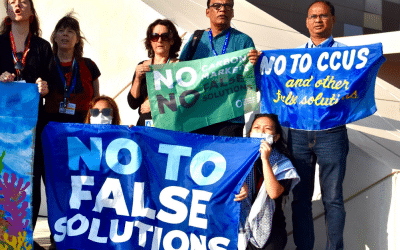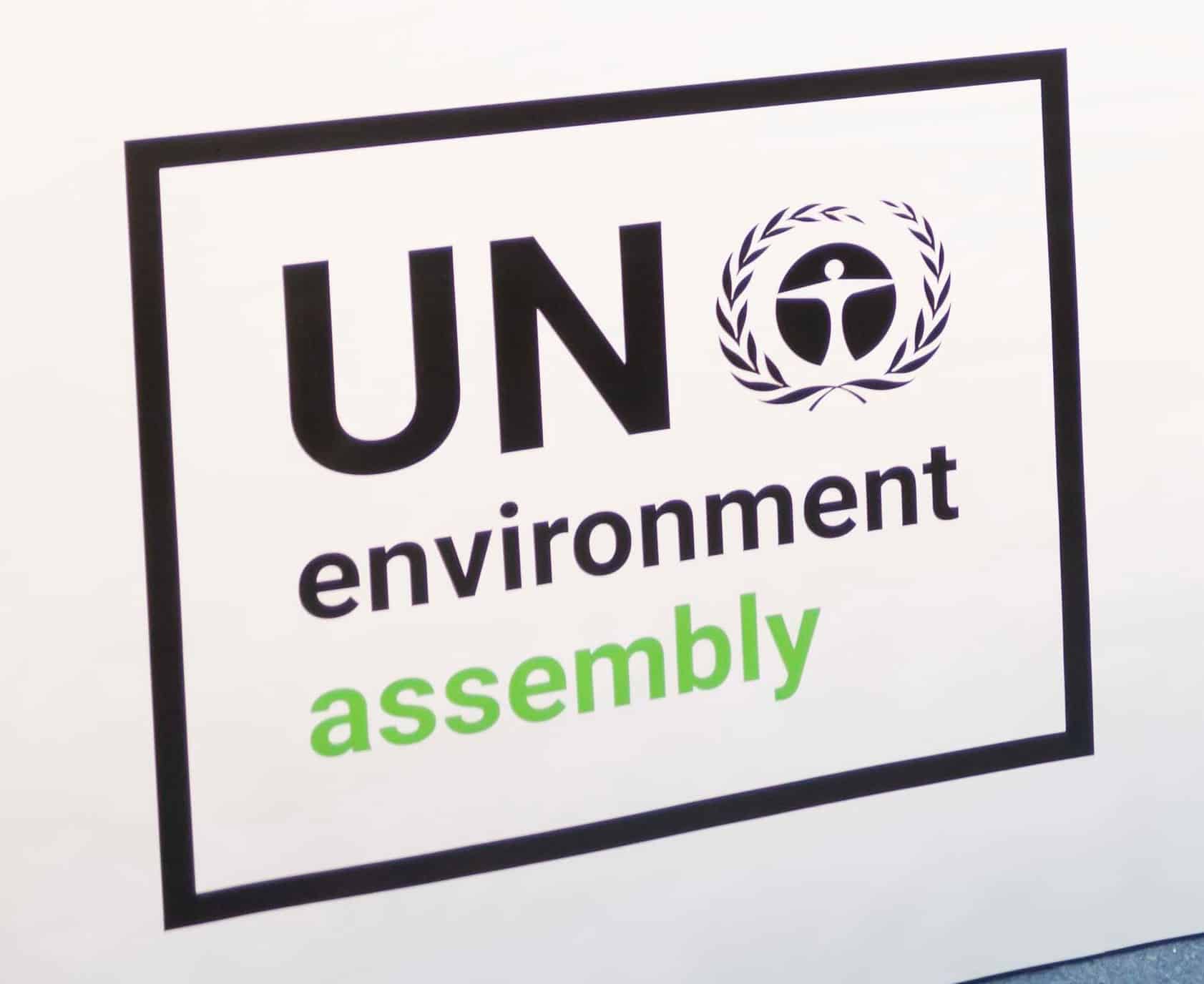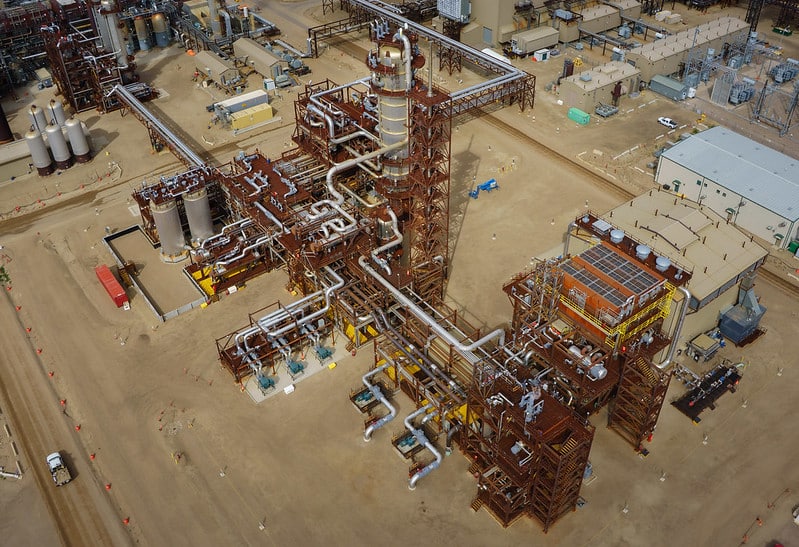by Rachel Smolker
As the realities of global climate change become ever more alarming, advocates of technological approaches to “geoengineer” the planet’s climate are gaining a following.
But the technologies that are promoted — from spraying sulphate particles into the stratosphere, to dumping iron particles into the ocean, to stimulate carbon absorbing plankton, to burning millions of trees and burying the char in soils — are all fraught with clear and obvious risks, and are most likely only going to make matters worse.
Yet zeal for these approaches continues unabated. According to right-wing think tank American Enterprise Institute, geoengineering offers:
“…the marriage of capitalism and climate remediation…What if corporations shoulder more costs and lead the technological charge, all for a huge potential payoff?…Let’s hope we are unleashing enlightened capitalist forces that just might drive the kind of technological innovation necessary to genuinely tackle climate change.”
Notably, on the very same website, American Enterprise Institute claims that opponents of the Keystone Pipeline are exaggerating environmental risks while undermining economic gains and ‘neighborliness‘.
The connection between the tar sands industry and geoengineering advocates is perhaps not immediately obvious, but it makes perfect, ugly sense. Tar sands investors and their allies have long realized that geoengineering could provide them an extended lease on life — and a convenient means to avoid the shuttering of their industry, which many consider the single most destructive and climat — damaging form of energy extraction.
Hence, it isn’t surprising that tar sands magnate Murray Edwards, director of Canadian Natural Resources Ltd, actually fact funds a geoengineering company that works on techniques for capturing CO2 from the air called Carbon Engineering.
Carbon Engineering’s president, David Keith, is one of the most vocal and best funded advocates of geoengineering. Carbon Dioxide air capture is often viewed as benign or “soft” geoengineering. After all, what could possibly be wrong with removing carbon dioxide from the overloaded atmosphere?
For starters, air capture of CO2 requires vast amounts of water and, yes, more energy. According to one study, scrubbing all current annual fossil fuel emissions from the air would deprive 53 million people of water. Even capturing CO2 from power station smokestacks, where it is already in a relatively concentrated stream, requires those power plants to burn nearly one third more fuel in order to generate the same amount of energy, plus the additional demand required to power carbon capture.
Capturing CO2 from the air, where it is measured in parts per million, would require vastly more power stations to be built in the first place. More carbon-spewing power stations that is, to help scrub a bit of the emitted CO2 back out of the air.
What Carbon Engineering is developing may be nonsensical from an environmental and scientific perspective, but it fits neatly into the tar sands’ industry agenda for portraying themselves as “low carbon.” In 2011, Richard Branson chose Calgary for announcing the shortlist of his “Virgin Earth Challenge” which offers a $25 million prize to one project working to remove CO2 from the air. His spokesperson explained the rationale for this choice:
“Calgary is a good place to start low-carbon technology. It’s an energy centre [with inventiveness and rigor to apply “to sustainable, low-carbon and economically viable technology.”
Tar sands influence behind so-called ‘soft geoengineering’ can be found in unexpected places. Take a recent announcement by Vermont-based Green Mountain Coffee:
“Mountain Coffee Roasters is helping to fund nonprofit Radio Lifeline’s Black Earth Project, an initiative that uses biochar to help Rwandan farmers mitigate the effects of climate change. Radio Lifeline’s project partner Re:char, a Kenyan developer of small-scale biochar technologies, will use agricultural residues such as dried corn stalks, grasses, rice hulls, coffee pulp, cow manure and wood chips as feedstock for the biochar production.”
Far greater Conoco funds have gone to biochar developments in Iowa, to the Biochar Protocol , which aims to get biochar included into carbon offset markets, and to CoolPlanet, a US Venture with the motto: “Imagine driving today’s cars & SUV’s while actually reversing global warming using fuel that costs less than $1.50/gallon.”
Other tar sands investors, including Cenovus Energy, BP and Shell have also funded biochar developments, as has their friend Richard Branson.
Some might argue that it is acceptable to take dirty money to fund projects that will help African farmers make their soils more fertile and hold more carbon. Yet what the scientific evidence and experience from field trials shows is that biochar cannot be relied on to achieve either of those goals.
It can even have the effect of suppressing yields and causing a loss of soil carbon. Farmers who are recruited for supposed “trials” tend to be ill-informed, hearing only the hype from project developers. In effect, they are being duped to take part in these projects based on incomplete and in some cases downright false information.
For example, when a Cameroonian researcher looked at a Biochar Fund project in his country, he found that farmers had been promised great benefits, including finance from nonexistent carbon markets. They had donated their land and labor. Yet the promised benefits failed to materialize, and the project was shortly abandoned. It was nonetheless touted as a “success” on websites and in the media.
So far, biochar projects are invariably small, largely serving PR purposes. Yet if, as many of its advocates hope, it were to be scaled up to the level needed to supposedly offset any significant amount of fossil fuel emissions, the consequences would be grave. According to a study about the “sustainable biochar potential”, 556 million hectares of land would need to be converted to biochar production to “offset” 12 per cent of annual CO2 emissions (presuming, of course, that all of that biochar would actually sequester carbon, which is contradicted by evidence).
Carbon dioxide air capture and biochar, despite their potentially massive impacts in terms of energy, water and land requirements, are among the geoengineering proposals that are considered more benign. They are being promoted in part to soften up public opinion for other more intuitively objectionable forms of geo-engineering, such as spraying vast amounts of sulphur particles into the stratosphere or manipulating clouds over large areas.
Those approaches would indeed be guaranteed to produce rapid effects. Among them: immediate crop-failures, acid rain and ozone destruction. In sum, geoengineering options amount to “picking your poison.” The tar sands industry, with somewhere on the order of 50 billion dollars invested and rapidly expanding its operations, is hoping that choice will enable them to continue profiting from their dirty business, at any and all cost to the planet.
This article originally appeared on HuffPo.


